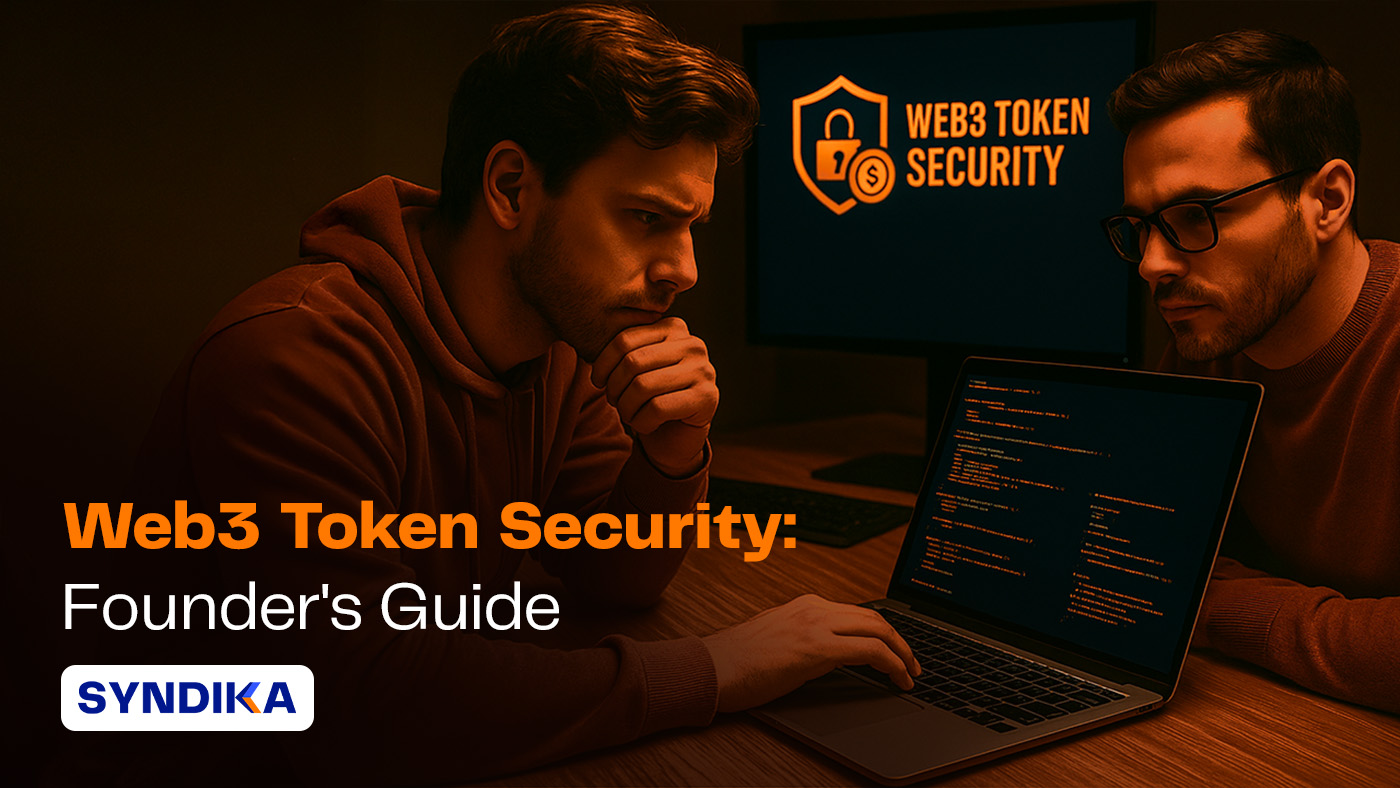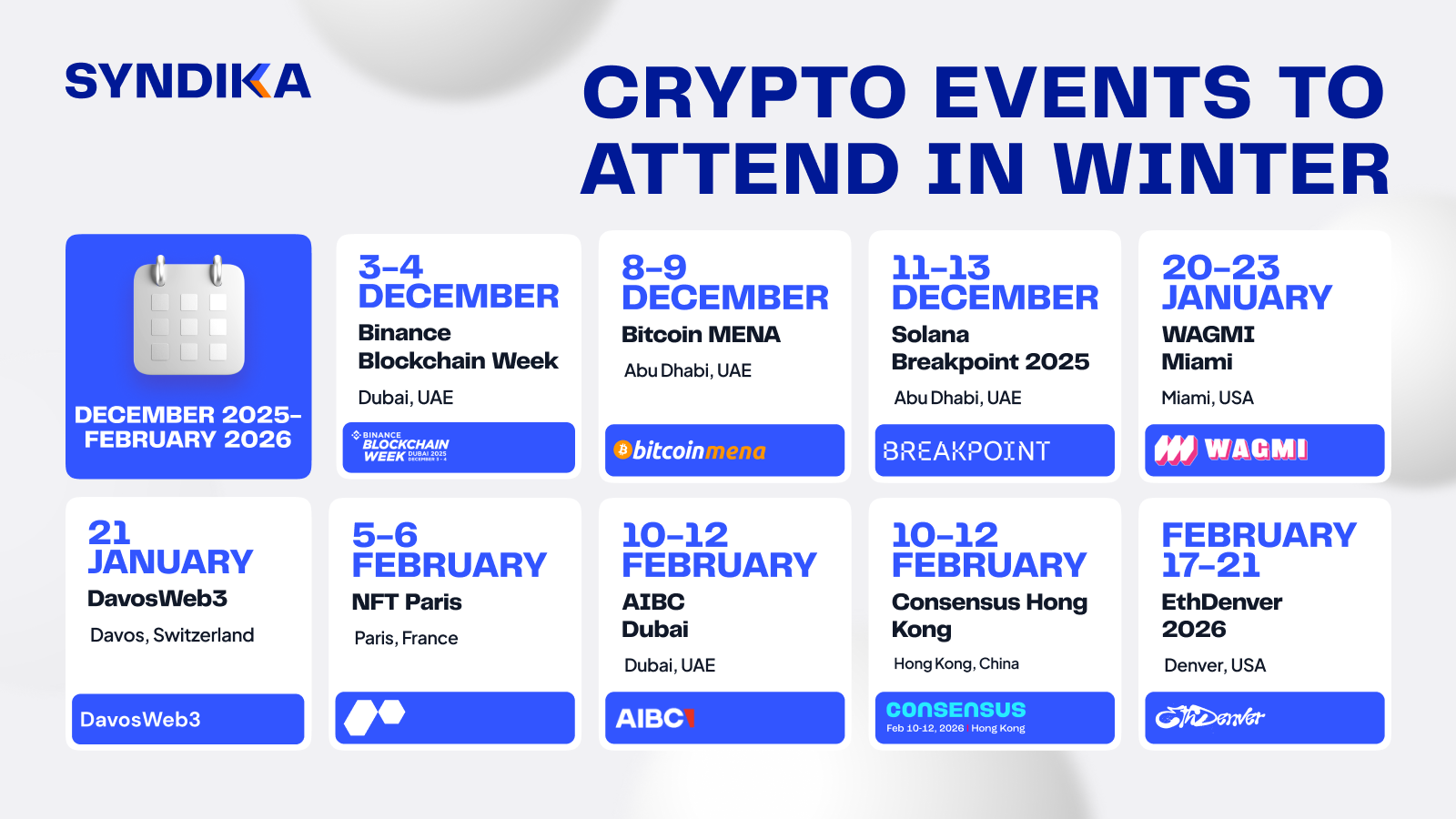
In H1 2025, the crypto ecosystem lost $3.1 billion from hacks and scams – already exceeding the total losses of 2024 alone. Moreover, most of these crypto projects were early-stage startups, and according to Immunefi quarterly hack reports, many never recovered liquidity after the attack.
The message is clear: token security is a must in Web3. Investors, exchanges, and communities are watching closely – not just for innovation, but for how well teams protect the foundations of their ecosystems.
Together with our partners, Hacken and QuillAudits, we have prepared a clear guide that breaks down security practices every Web3 founder should follow to keep their token safe in 2025.
1. Protect Your Keys
Private keys are the master switch to your token’s smart contracts; thus, security starts with key management. If they’re exposed, attackers don’t need to hack your code – they simply take control over your keys.
The safest practice is to use hardware wallets, which keep keys offline and out of reach of malware. For organizations, a multi-signature (multi-sig) setup ensures that no single person can move funds or alter contracts without others approving it (learn how to securely back up your wallet here).
Another equally important thing is your private key access management. Not every co-founder, advisor, or team member needs access to sensitive keys. Limit permissions to the absolute minimum number of trusted people, and document who has and even used to have access to your private keys.
2. Audit Smart Contracts Continuously
One of the biggest mistakes Web3 founders make is believing that a single smart contract audit is enough. A 2024 Hacken Web3 Security Report shows that most exploited projects had no ongoing audit process – they only performed a single pre-launch audit. Can you believe that?
Static security doesn’t work in a dynamic environment like Web3. An audit provides assurance at a snapshot in time, but the moment you update smart contracts or integrate with new protocols, new risks occur.
Founders should treat security audits like ongoing health check-ups. Plan for security reviews before each major milestone: token launch, exchange listing, DeFi protocol upgrades, or treasury deployments.
What’s more, for investors, regular security audits are a signal that your project is healthy and reliable. A blockchain project that integrates security at every step demonstrates to stakeholders that it values longevity, not just hype.
3. Protect Liquidity with Smart Design
Liquidity is one of the most attractive honeypots in DeFi, making it essential for Web3 founders to anticipate this risk from day one. Attackers often scan for blockchain projects that concentrate liquidity in one place or fail to lock it.
A stronger approach is to split liquidity across multiple liquidity pools or pairs – if one is compromised, the damage is contained. Think of it as building multiple bridges instead of one: if one fails, the ecosystem still functions.
Using staged unlocks, rather than a single cliff unlock, adds another important buffer. Gradual releases of liquidity prevent sudden shocks in supply, signal long-term commitment to the community, and reduce opportunities for bad actors to exploit predictable unlock events.
4. Test For Oracle Manipulation
Many of the biggest DeFi hacks in recent years came from weak oracle setups. Oracles are tools that bring outside information – like token prices – into your smart contracts. If the oracle is hacked or manipulated, your contract can be tricked into bad decisions. For example, attackers might make it believe an asset is worth far less than it really is, causing your system to sell tokens for pennies.
The safest path is to use decentralized oracles that pull from multiple sources. Services like Chainlink aggregate data to reduce the chance of a single point of failure.
Your smart contracts should also be written to resist sudden, unnatural price moves. One way to do this is by using time-weighted average prices (TWAPs) rather than instant spot prices. TWAPs smooth out volatility and help block flash-loan attacks that create short-lived price glitches.
5. Secure Your Multi-Sig Setup
Multi-sig wallets are a major improvement over single private keys, but they only work if implemented wisely. If most signers belong to the same small group, you haven’t really decentralized control – you’ve just added bureaucracy. Attackers (or even insiders) can still coordinate to exploit the system. Yev Broshevan from Hacken explains, “Most multi-sig exploits don’t stem from the contracts themselves, but from the layers around them like front ends, access policies, and human errors.”
A better setup is to diversify your signers. Include external advisors, trusted ecosystem partners, or even independent security firms. This reduces the risk of collusion and distributes responsibility beyond the founding team. Hacken’s CEO also adds that teams should “keep setups simple, use EIP-712 signing, hardware wallets, and continuous monitoring to stay resilient.”
It’s also important to think about operational design: how many signatures are required, how recovery is handled if a signer is unavailable, and what thresholds make sense for different types of transactions.
6. Limit Admin Powers
Admin wallets often come with “god powers” – the ability to mint tokens, change supply, or pause trading. While intended as safeguards, they automatically become prime targets for hackers. If compromised, a malicious actor gains near-total control over your project.
What should be done instead? The first step is to restrict admin capabilities to the bare minimum. Not every function needs superuser access, and overly broad permissions create additional risks.
Sarika Singh from QuillAudits adds: “Access control vulnerabilities were the single largest attack vector in H1 2025, driving over $1.6B in losses. Overexposed admin privileges were a common denominator in most high-impact exploits as per the recent QuillAudits 2025 H1 Report.”
What else? Use timelocks that delay changes, giving the community or security team time to react. In addition, require multi-sig confirmations for sensitive actions like minting or changing parameters.
7. Simulate Real-World Attack Scenarios
Security audits catch many vulnerabilities, but they often miss how attackers actually behave in the wild. That’s where a “red team” comes into play. The stress tests mimic how real exploits unfold, from phishing attempts to liquidity draining.
These exercises expose weaknesses beyond the technical layer. A protocol may be secure on paper, yet still fail if the startup team reacts poorly during a crisis. Miscommunication, panic, or delays in decision-making can create openings that attackers exploit just as effectively as coding errors.
According to the QuillAudits team, “The single largest exploit YTD is the Bybit breach at $1.49, and it wasn’t just about code flaws. Red team simulations are how teams close that gap before attackers do.” Read the full Bybit hack analysis – QuillAudits.
Red teaming functions like a crisis rehearsal for your project. While it’s impossible to anticipate every exploit, practicing response scenarios equips both systems and people to act quickly and effectively. Blockchain projects that incorporate these drills into their security strategy are far more likely to withstand real-world attacks.
8. Prepare a Rapid Response Plan
Building on what has been said in the previous tip, the key difference between blockchain projects that collapse and those that recover after a hack is response time. Why? When millions can be lost in minutes, having a pre-written playbook can save your crypto project’s future.
Your plan should outline who has the authority to pause smart contracts, how to contact exchanges to freeze suspicious activity, and what communication goes out to the community. As Hacken notes, “Real-time threat detection and automated response are must-haves now, as they enable teams to detect anomalies, analyze attack patterns, and block malicious transactions.” Read more about Hacken’s post-deployment monitoring and response platform.
Just as important is communication transparency. Communities lose trust faster than tokens lose value when silence follows an exploit. A rehearsed, 24-hour response strategy, covering technical action and public messaging, ensures you maintain credibility, even under attack.
Final Words
Token security is not a single checklist item – it’s a culture. The Web3 startups that survive in 2025 will be those that treat security as part of their identity, embedding it into every contract upgrade, liquidity move, and governance decision.
At the end of the day, we believe that Web3 is still a builder’s game. Crypto hacks and exploits will keep evolving, but so will defenses. By combining strong technical practices with prepared human responses, Web3 founders can transform security from a liability into a strong advantage.



